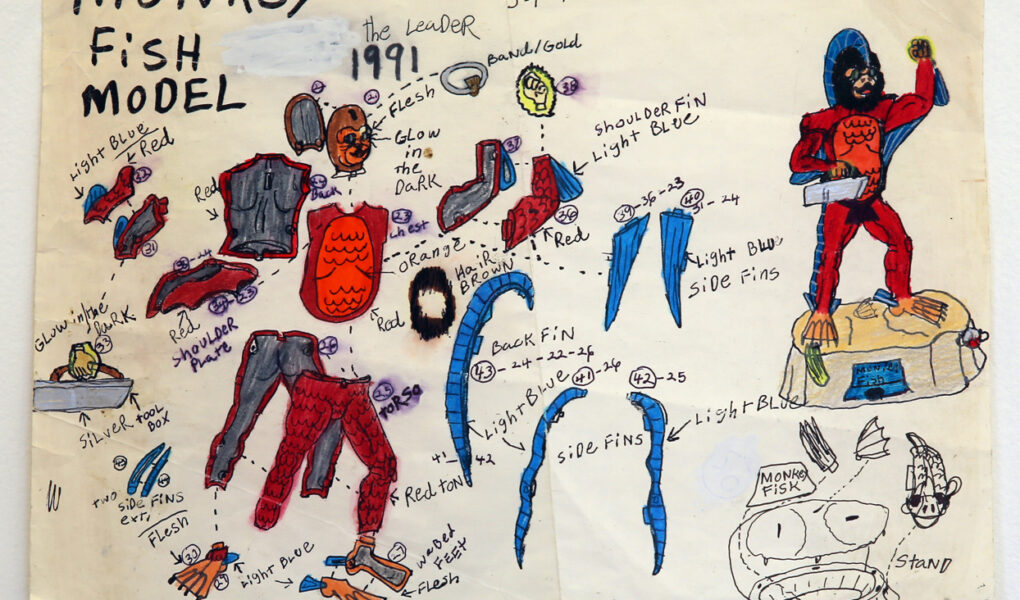by Patrick Collier
I first saw Kurt Fisk’s Monkey Fish drawings at ArtWorks, a gallery/project space that is part of Collaborative Employment Innovations (CEI), an employment service for people who experience disabilities in Corvallis, Oregon. I was drawn to one work in particular, a bright red, marquee-sized, collaged and hand-drawn promotional poster for the DVD release of his short animated film, The Original Sea Monkey Fishes. In short, it is the tale of a scientist’s exploration of a sunken ship and his encounter with a merman-like Monkey Fish. Included on the DVD are drawings from various stages in the 45-year development of these fantasy creatures, the Monkey Fishes (the plural spelling is Fisk’s).
In 1971, then twelve years old, Fisk ordered his first sea-monkey kit from the back pages of a comic book. The brine shrimp he received looked nothing like the happy little alien creatures in the ad, so he decided to start from scratch, change their name to Monkey Fishes, and create his own cast of characters. Over the years he has filled notebook upon notebook with pen and marker drawings of these quasi-human aquatic beings, and modeled dozens of painted clay Monkey Fish figurines.
Originally commissioned for the Visual Arts Project by The Ford Family Foundation CRITICAL CONVERSATIONS program element, and edited by Sue Taylor, Professor Emerita of Art History, Portland State University, this essay also appeared in FIGURING, an annual arts journal (shifting title as it progresses) of the same program. Critical Conversations is led by the University of Oregon with partners Portland State University, The Cooley Gallery, Reed College; and PNCA at Willamette University.
The inaugural publication is dedicated to notions of “figuring,” that is, the processing of a moment to inform a position from which to act, the presentation of a form, or expression of a body. By holding space for both indeterminacy and latent form, Figuring conjures histories and possible futures, lived experiences, and propositions for ways that ethereal matter might exist concretely or be allowed to endure as defined by its own logic.
